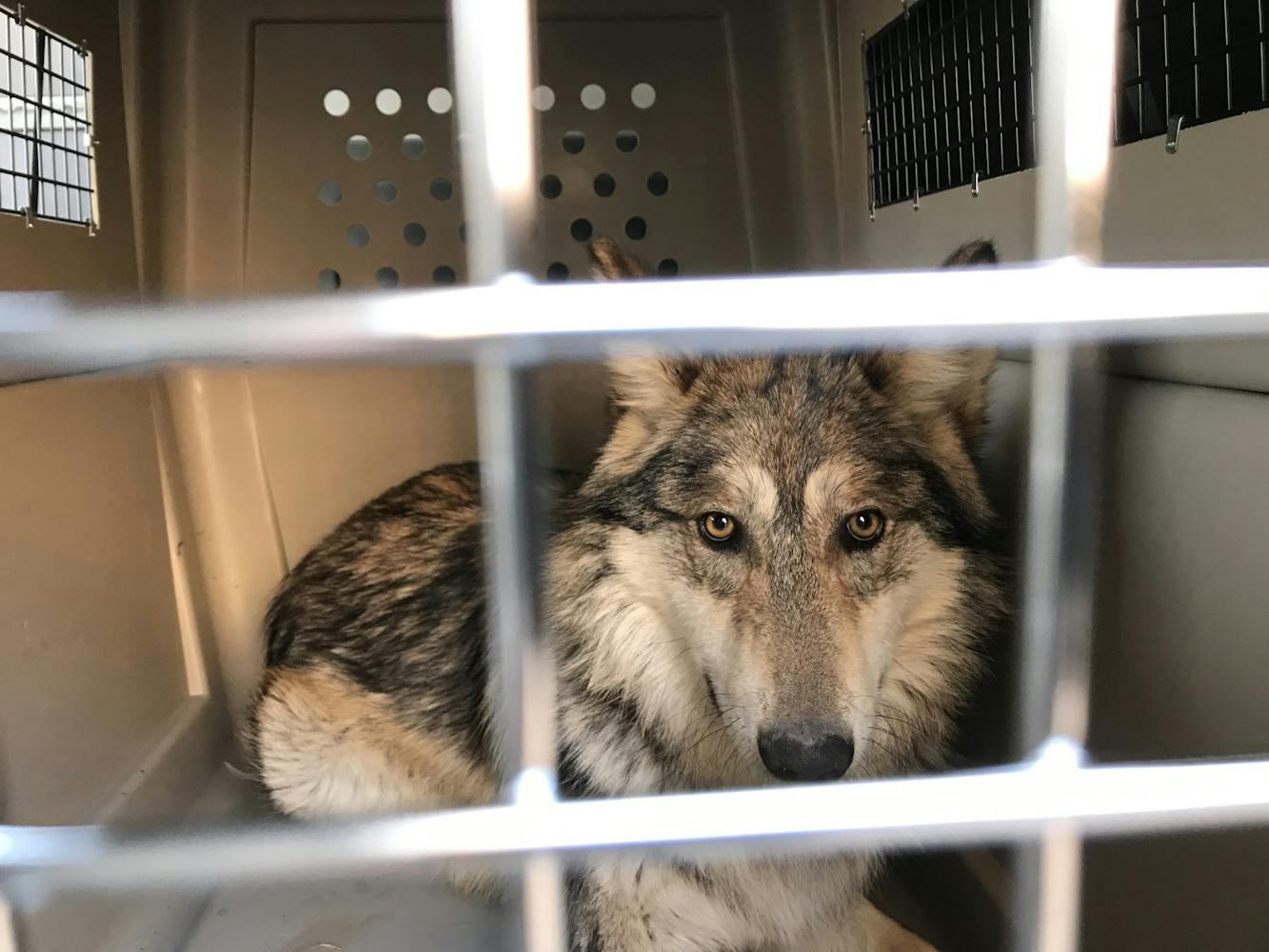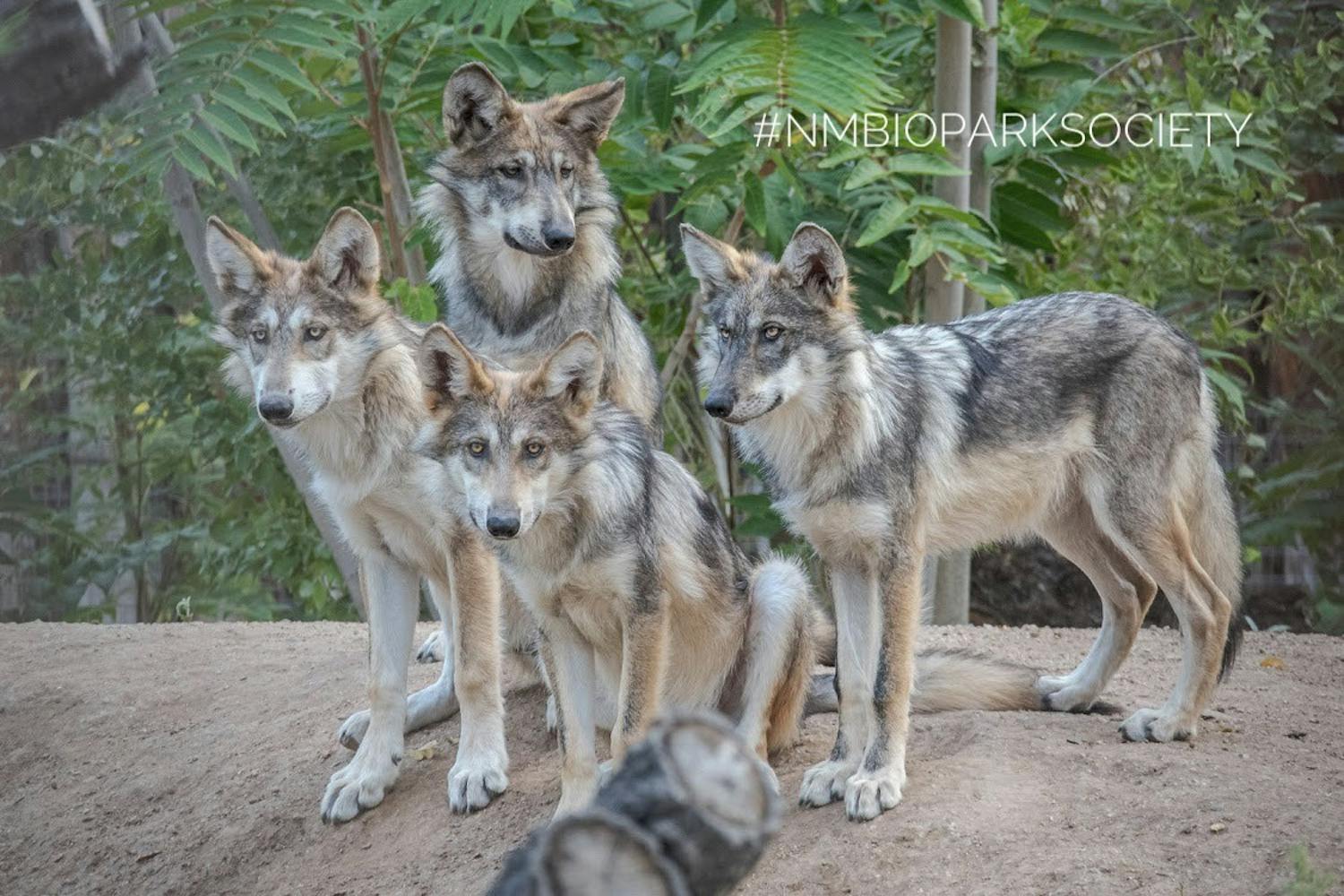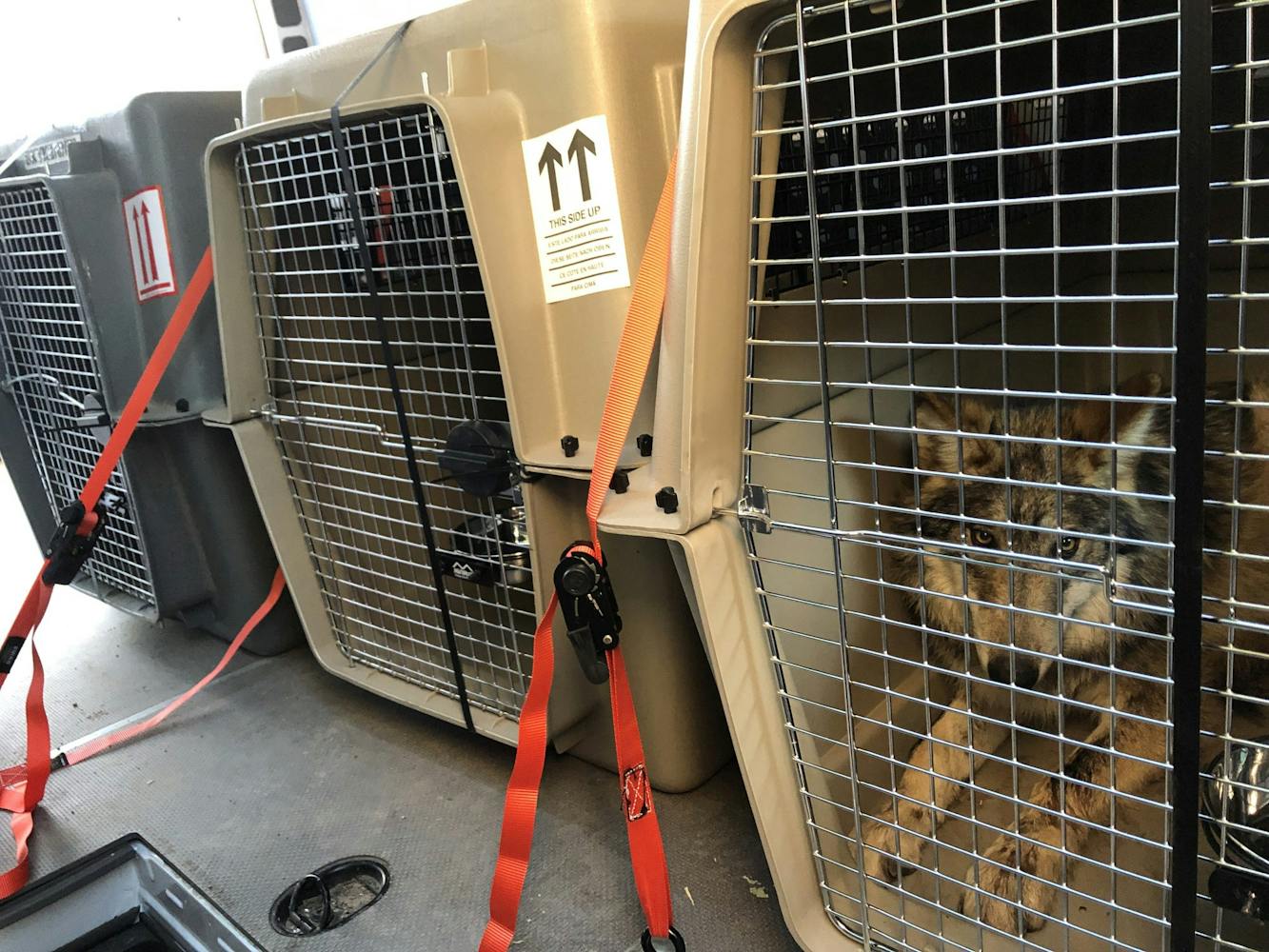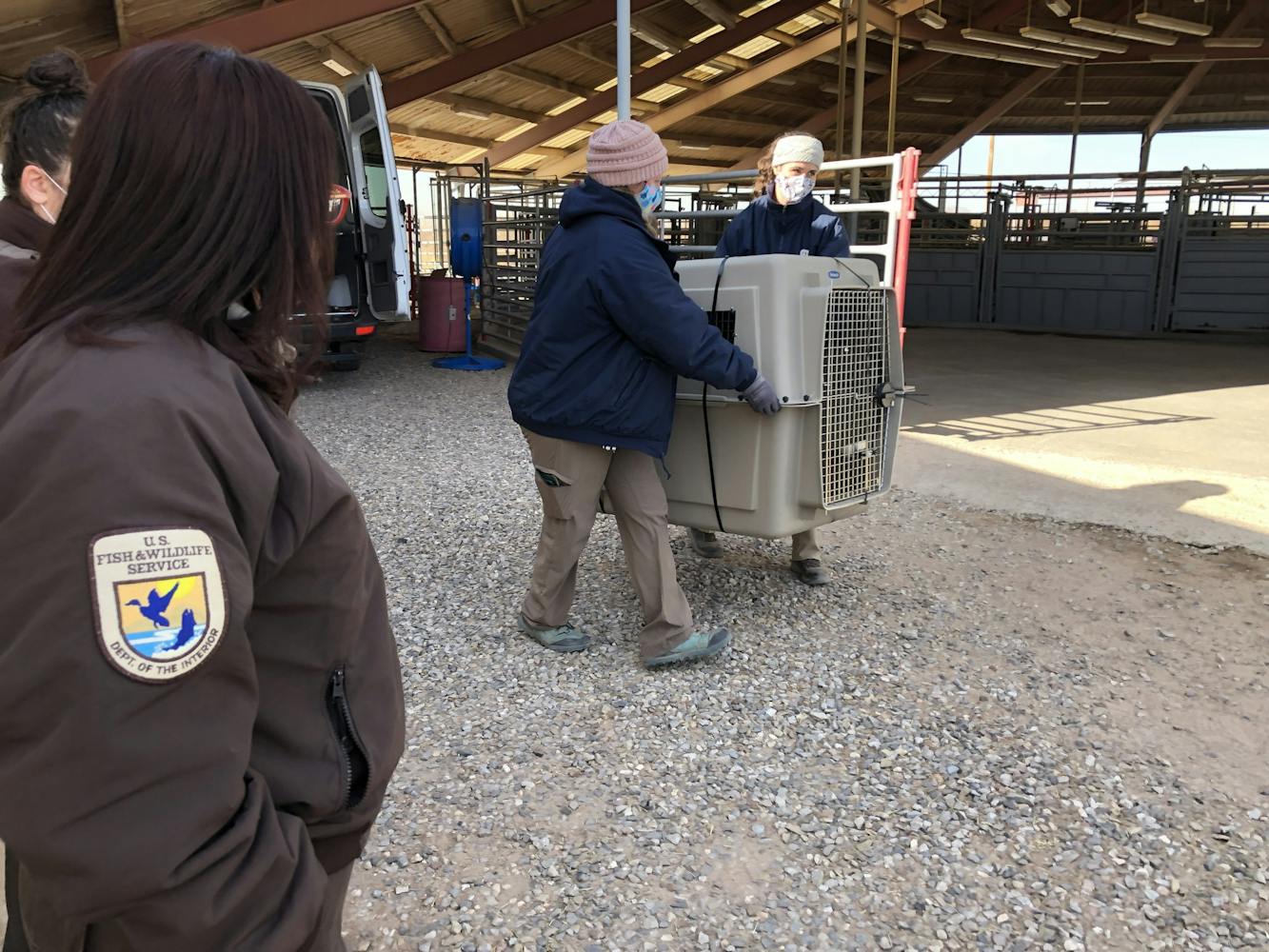For one wolf, it meant returning to the country where she was born in captivity; for the whole pack, it meant a chance to start a new life roaming free in the wild. The pack in question? Kawi, Ryder and their seven pups — a Mexican gray wolf pack that formerly called the ABQ BioPark their home.
The BioPark recently reported that on Jan. 15, the nine endangered wolves were loaded into crates and started the trek down to their destination, a “wilding school” south of Mexico City. BioPark staff members transported the pack to the U.S./Mexico border, and a final green light from the United States Fish and Wildlife Service (FWS) meant the pack could continue their journey with a team of conservationists from the Universidad Autónoma de Querétaro.
The pack’s release into the wild will hopefully continue the success that Ryder and Kawi had in producing offspring at the BioPark: a litter of three pups in 2019 and a litter of seven in 2020 that also traveled with their parents to Mexico. Archer, one of the males born in 2019, remains at the BioPark and will eventually join a new pack.
“It’s a zoo’s dream to directly help a wild population like this. It’s even more powerful and touching for us that it’s our beloved lobo that we’re helping,” Eric Flynn, the BioPark’s mammal curator, said in a press release. Flynn also said that at the wilding school, the wolves will be taught how to hunt and survive by caregivers using a hands-off approach until they are approved for release into the wilderness of northern Mexico.
The BioPark has been a major player in the conservation of Mexican gray wolves since 1983 when it partnered with the FWS to help restore the species that was nearly driven to extinction in the wild in the 1970s. The environmental museum reported that several wolves born at their Albuquerque facilities have been released into the wild in the U.S., but this international pack release marks a major stepping stone for the organization.
Unfortunately, the road to restoring the Mexican gray wolf population to its historic and rightful habitat has not always been smooth. According to the nonprofit Defenders of Wildlife, Mexican gray wolves have consistently remained the most endangered wolf species in the world because of their compromised genetics due to a dwindling gene pool and intolerance of humans.
The wolves used to be plentiful in Arizona, New Mexico and Texas, in addition to northern parts of Mexico. However, run-ins with livestock and humans ultimately ensured the decline of the species.
“Toward the turn of the century, high cattle stocking rates and low populations of native prey, such as deer and elk, caused many wolves to prey on livestock ... Wolves were trapped, shot and poisoned by both private individuals and government agents,” the Wolf Conservation Center, a nonprofit educational organization dedicated to the preservation of wolves, reported.
By 1976, the Mexican gray wolf was considered to be all but extinct in the wild, with only a few wolves remaining in captivity. It was only through concerted efforts by the U.S. and Mexican governments to create a survival plan for the incredibly endangered species that the first wolf pack was reintroduced to Arizona in 1998.
“The Mexican Wolf Species Survival Plan is a bi-national initiative … whose primary purpose is to support the reestablishment of the Mexican wolf in the wild in both the United States and Mexico through captive breeding, public education and research,” the Wolf Conservation Center said.
So far, the number of Mexican gray wolves in the wild is continuing to trend upward, indicating both the successful nature and necessity of the survival plan. A report by the FWS stated that at the beginning of 2019, the Mexican wolf Interagency Field Team — a group of on-the-ground conservation workers from multiple state and federal governments — had documented a population of 131 wolves between Arizona and New Mexico.
Susan Montoya Bryan reported for the Associated Press that by 2020, a population of 163 wolves was surveyed between the two states — an impressive 25% increase from 2019. In addition, approximately 30 wolves were found in the wilderness of the Sierra Madre Occidental mountain range in northwestern Mexico.
Get content from The Daily Lobo delivered to your inbox
However, one of the biggest hurdles conservationists are facing is finding a way to handle the inevitable interactions between wolves and livestock, which has historically often led to ranchers shooting and killing wolves in a bid to protect their cattle. Attempting to solve this conundrum led to the foundation of the Mexican Wolf/Livestock Coexistence Council in 2011, a group consisting of ranchers, environmentalists and Indigenous people.
In a guest column for the Albuquerque Journal, Bryan Bird, the Southwest program director for Defenders of Wildlife, stated that the council is “dedicated to supporting a viable model for successfully coexistent ranching, self-sustaining wolf populations and healthy western landscapes in the American Southwest.”
International cooperation among ranchers, conservationists and organizations like the ABQ BioPark will be imperative to getting the Mexican gray wolf off the endangered species list. But right now, small victories such as the eventual release of Kawi, Ryder and their seven pups into the wild should be celebrated.
In the words of Mayor Tim Keller: “Albuquerque can be proud that its hometown zoo is focused on conservation and helping lobos make it again in the wild."
Shelby Kleinhans is a beat reporter at the Daily Lobo. She can be contacted at culture@dailylobo.com or on Twitter @BirdsNotReal99









